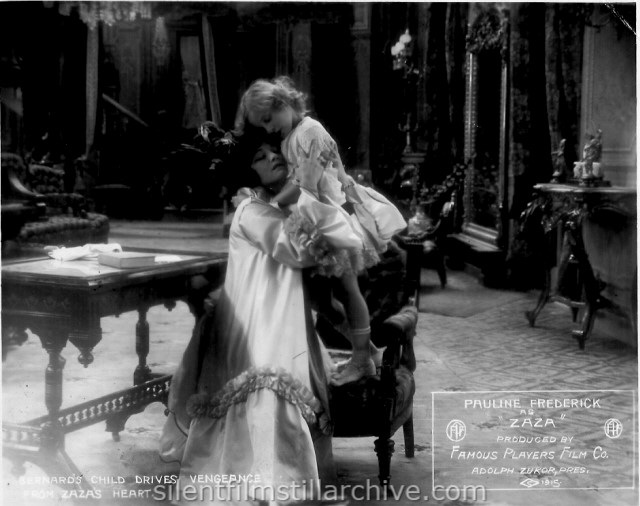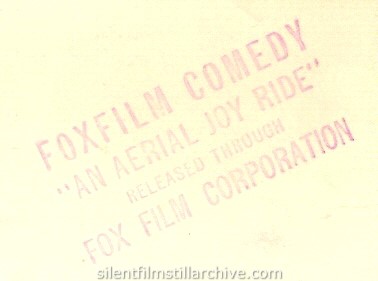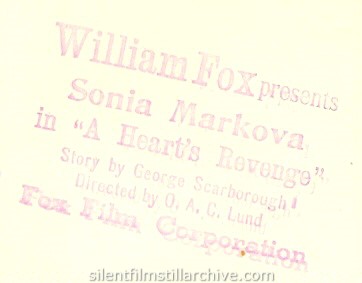![]()

Identifying Stills
Of course, the easiest way to identify the film associated with a still is to use information printed on the still. When movie photos were used in theater lobbys or when they were sent to newspapers and magazines, they usually had identifying information attached. These examples below have the film and sometimes the star information on the bottom border of the still.

An example photo from Paramount's WET PAINT.

In the 1910s, Fox would print the title in the bottom border.

An example of a United Artists still from TWO ARABIAN NIGHTS.

An example First National photo from THE STOLEN BRIDE.

An example Warner Brothers photo from GLORIOUS BETSY.

George Kleine was identifying his photos this way as early as 1915. This example is from GLORIA'S ROMANCE.

This is an example of an 8 inch by 10 inch mini lobby card from Paramount. Paramount issued these from around 1914 through the early 1920s. This example is hand-lettered, although many of their mini lobby cards had printed logos and captions.

During the teens and early twenties, Fox would stamp film information on the back of each photo. Above is the back of a still from AN AERIAL JOYRIDE (1917). Below is an example from A HEART'S REVENGE (1918).


M-G-M would stencil a description on the back of their photos. This example is from DIAMOND HANDCUFFS (1928).
![]()
Both Paramount and Universal issued photos for newspapers printed on thinner paper with the idenfication on the edge of the photo negative. Here is an example from Universal's THE PRICE OF PLEASURE (1925).
Other studios would attach a typewritten "snipe" to the back describing
the scene on the photo.
I have two identical stills of
Two Arabian Knights (1928). One
still has the studio ID printed at the bottom and the other is missing
it. There were different versions of photos that were sent to theaters,
distributors, and newspapers and magazines. Photos were also used inside
the studio by the prop department, the wardrobe department and marketing,
and they already knew which film was represented. A huge number of these
had no identification on them at all, making it difficult to identify
them today.
However, still codes were usually inscribed on the photo negative and you
can see an index of still codes starting with
numbers and still codes starting with letters
to help you identify these photos.
By the mid-1930s, photos always
carried an ID and a copyright notice down at the bottom.
Last Modified December 31, 2020














